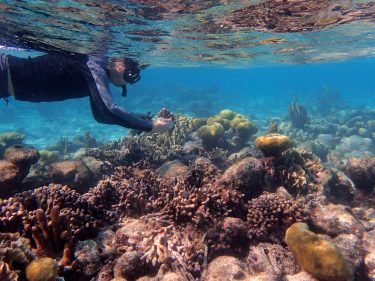
Corals are key to ocean health because they support the densest, most diverse ecosystems and harbor species from turtles and algae to reef fish. UW scientists from the School of Aquatic and Fishery Sciences are looking at the burgeoning field of coral genetics to better predict, and maybe even prepare for, future threats to coral.
In a new study, Ph.D. student James Dimond and Professor Steven Roberts use modern DNA-sequencing tools to figure out the relatedness of three similar-looking corals.
“In the past we’ve relied on physical characteristics, like the coral skeleton, to determine what constitutes a coral species,” Dimond said. “But the problem with that is that corals can vary their skeletal architecture. So disentangling whether you have two different species or just a single species that’s varying itself due to environmental conditions can be really tricky.”
Defining a species matters for conservation, because you can’t monitor and protect a species if you don’t know it exists. And where a 2014 study found that the three corals in question were the same, Dimond and Roberts found genetic evidence suggesting that they’re actually three different species. Their results will be published in an upcoming issue of Molecular Biology.
Read more at UW Today »
